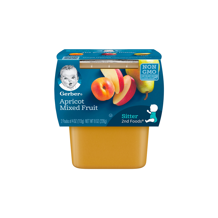
During pregnancy, your body undergoes countless changes as it prepares for the arrival of your baby. One of the most common experiences, especially in the second and third trimesters, are sensations that can take many expectant mothers by surprise. These are known as Braxton Hicks contractions, and while they might cause confusion or even concern at first, they’re a normal part of the journey towards childbirth.
If you’ve felt your belly tighten for a few seconds and then relax, you might already have experienced them without even realizing it. Understanding what Braxton Hicks contractions are and why they happen can help you feel more confident and at ease as your due date approaches.
Many mothers describe them as “practice contractions,” but it’s important to know when they’re simply a part of pregnancy—and when they could signal something more.
In FamilyNes, we’ll guide you through everything you need to know about Braxton Hicks contractions, including how to identify them, what causes them, and how they differ from true labor. With the right information, you can be more in tune with your body and enjoy a greater sense of calm and preparedness during your pregnancy.
What are Braxton Hicks Contractions?
Braxton Hicks contractions are mild, irregular contractions that can occur during pregnancy, often starting in the second trimester, but becoming more noticeable in the third. Sometimes referred to as "false labor" or "practice contractions," they are your body’s natural way of preparing for the real thing: labor and delivery.
Unlike true labor contractions, Braxton Hicks are usually infrequent, unpredictable, and don’t follow a consistent pattern. They may come and go, lasting anywhere from 30 seconds to 2 minutes, and often disappear when you change positions, rest, or stay hydrated.
These contractions typically don’t cause significant discomfort, although some women describe them as a tightening or hardening of the belly. They don’t lead to cervical dilation or signal that labor is beginning, which is one of the key differences between Braxton Hicks and real labor contractions.
While they can sometimes be startling, especially for first-time moms, Braxton Hicks contractions are completely normal and harmless. They serve as a gentle reminder that your body is getting ready for birth, gradually strengthening the uterine muscles for the big day.
Recognizing them for what they are can help you stay calm and focused as your pregnancy progresses.
How to Identify Braxton Hicks Contractions
Recognizing Braxton Hicks contractions can help you feel more in control and reduce unnecessary worry. Here are some common signs to help you identify them:
- Irregular timing: They don’t follow a consistent pattern. You might feel one contraction, then another hours later.
- Short duration: Most last between 30 seconds and 2 minutes.
- Mild intensity: These contractions are usually not painful. They may feel like a gentle tightening or hardening of your belly.
- No increase in intensity: Unlike true labor, they don’t get stronger or closer together over time.
- Stop with movement or rest: Changing positions, walking, or drinking water can make them go away.
- No cervical changes: Braxton Hicks contractions don’t lead to dilation or effacement of the cervix.
- Often felt later in the day: Many women notice them more in the evening or after physical activity.
If you’re unsure whether you're feeling Braxton Hicks contractions or real labor, it's always a good idea to consult your healthcare provider for reassurance and guidance.

Red Flags in Contractions
While Braxton Hicks contractions are usually harmless, it’s important to be aware of warning signs that could indicate true labor or a potential complication. Contact your healthcare provider right away if you experience any of the following:
- Regular and increasingly painful contractions: If contractions become more frequent, intense, and follow a consistent pattern, they may be signs of early labor.
- Contractions that don’t go away with rest or hydration: True labor contractions continue regardless of changes in activity or position.
- Vaginal bleeding or spotting: Any unexpected bleeding during pregnancy should be evaluated immediately.
- Fluid leaking from the vagina: This could be a sign that your water has broken.
- Decreased fetal movement: A noticeable drop in your baby’s usual activity could signal distress and should be addressed promptly.
- Severe pelvic or abdominal pain: Unlike the mild discomfort of Braxton Hicks, sharp or persistent pain may indicate a problem.
- Pressure in the pelvis or lower back: Combined with regular contractions, this could suggest preterm labor if it occurs before 37 weeks.
Always trust your instincts. If something doesn’t feel right, it’s better to seek medical advice to ensure both your health and your baby’s well-being.
Understanding Braxton Hicks contractions is an important part of preparing for childbirth. While they may feel unfamiliar or even unsettling at first, they’re a normal and expected part of pregnancy as your body gets ready for labor. By learning how to identify them, knowing what’s typical, and recognizing the red flags, you can feel more confident and calm throughout your pregnancy.
Remember, every woman’s experience is unique. If you ever have doubts or concerns about what you’re feeling, don’t hesitate to reach out to your healthcare provider. Staying informed and connected to your body helps you enjoy a healthier, more empowered journey to motherhood.
Frequently Asked Questions
1. When do Braxton Hicks contractions start?
Braxton Hicks contractions can begin as early as the second trimester, around week 20, but they are usually more noticeable in the third trimester as the body prepares for labor.
2. Should I be worried if I have a lot of Braxton Hicks contractions in one day?
Not necessarily. It’s common for them to become more frequent later in pregnancy or after physical activity. However, if they become regular, painful, or if they increase in intensity, it’s best to contact your healthcare provider.
3. How can I relieve Braxton Hicks contractions?
Changing positions, resting, staying hydrated, and practicing deep breathing can help ease Braxton Hicks contractions. Reducing stress may also help prevent them from occurring too often.










